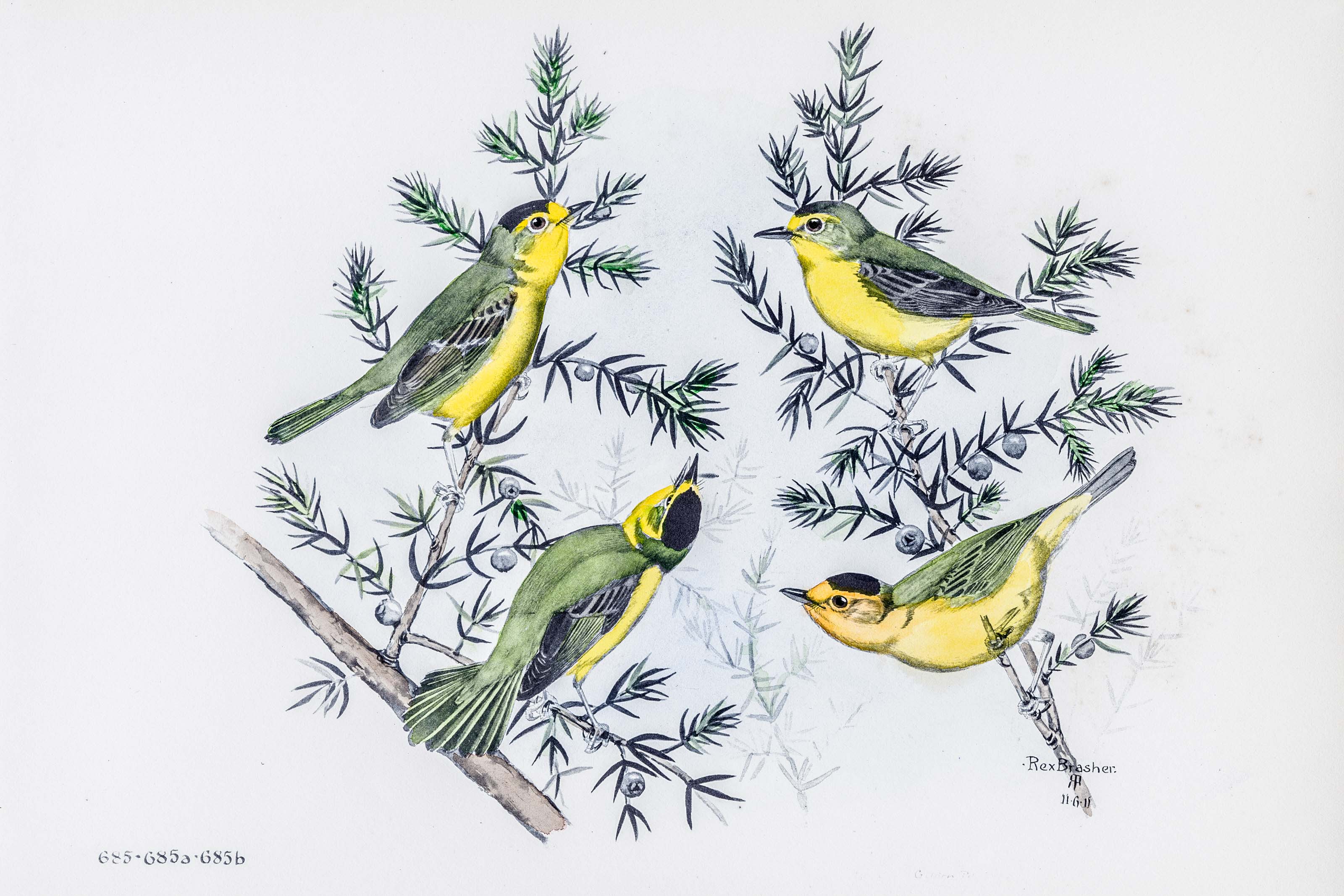
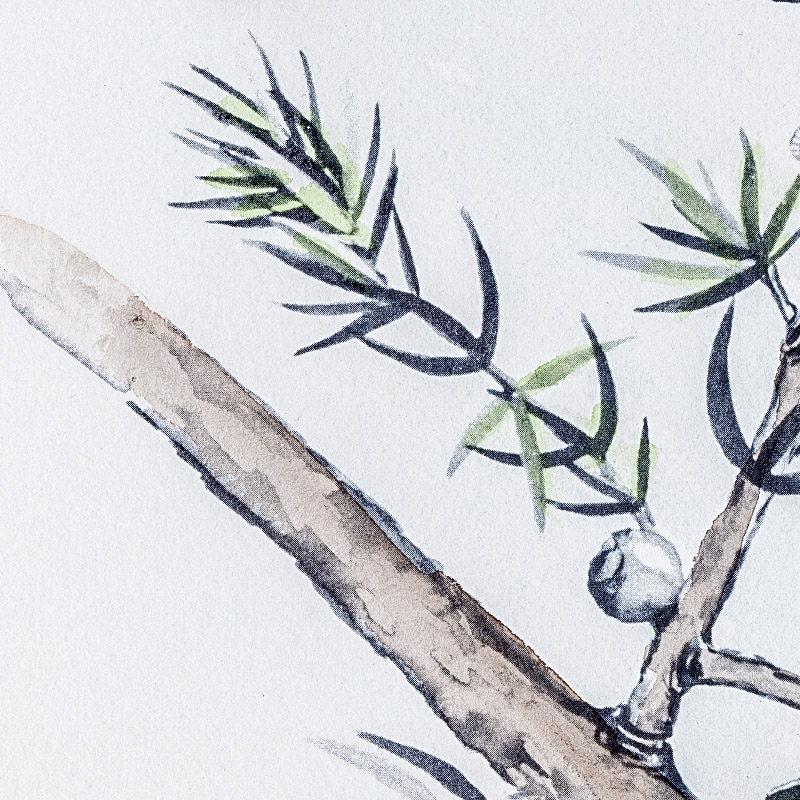
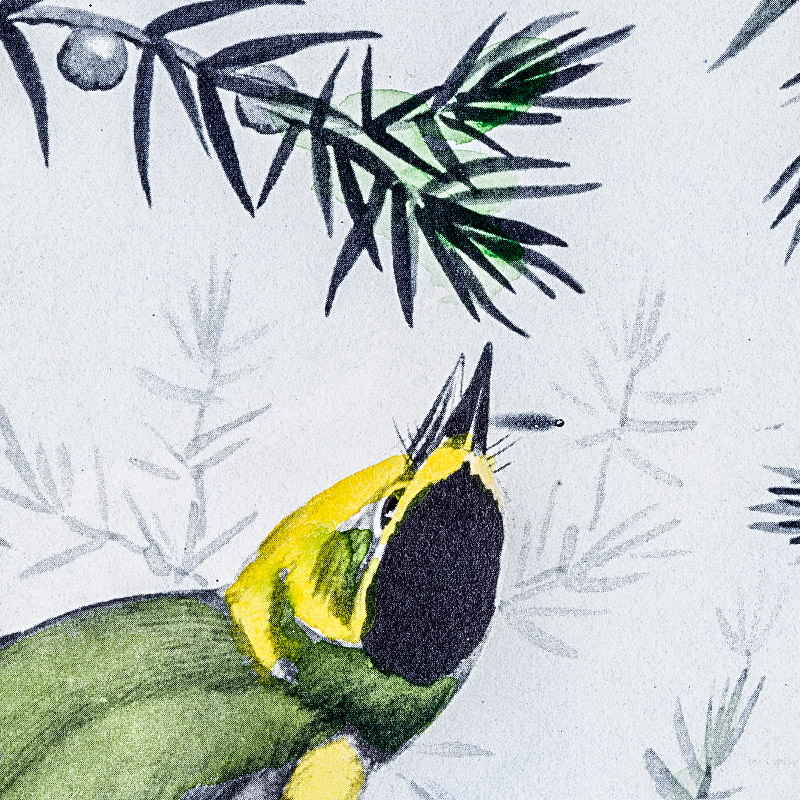
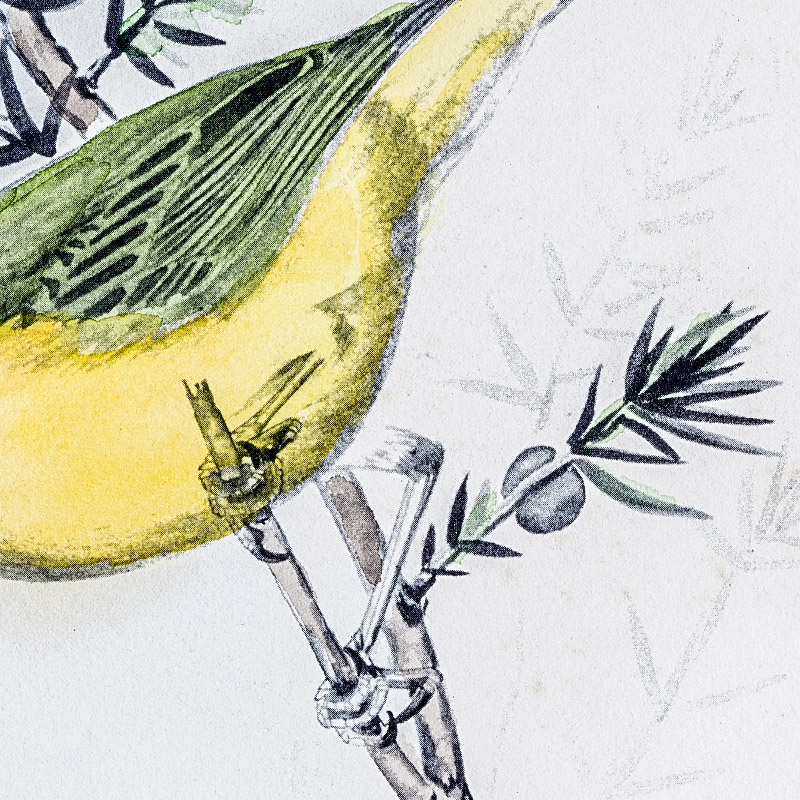

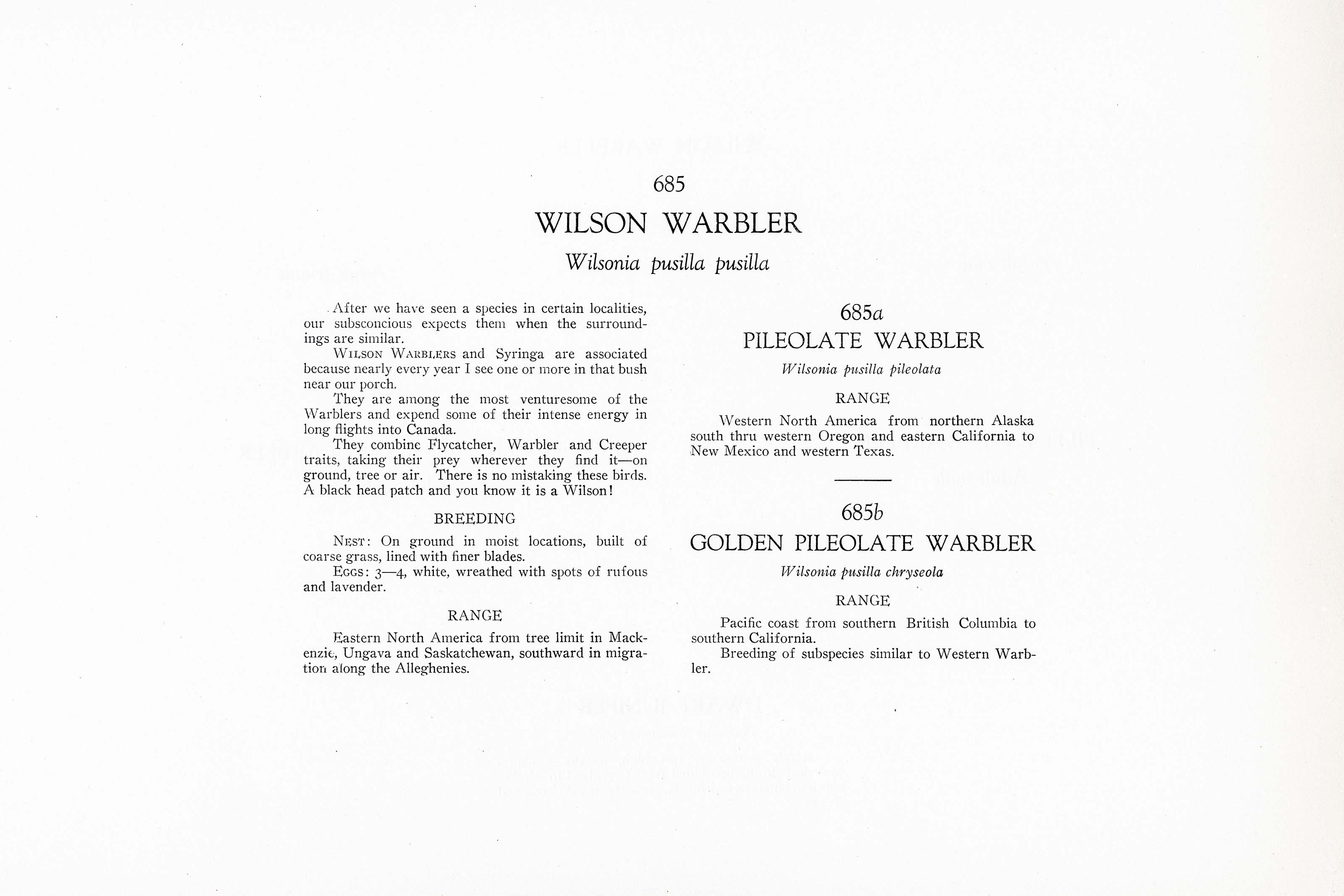

1911
1930
11
685-685a-685b
A team of dedicated board members, volunteers, and student interns has published every page in Volume 9. This volume includes 360 images of paintings and lyrical descriptions of birds, now available online for everyone to enjoy anywhere in the world. This is a monumental task. Each volume requires approximately 400 hours to photograph, edit, transcribe, catalog, and publish online. We need your support to complete this work.
If you're tech-savvy, have a good eye, are meticulous with details, and love structured data, please consider volunteering by emailing us at hello@rexbrasher.org.
We encourage all bird lovers and supporters to consider a monetary donation to support our mission to make Rex's work available for everyone. You can provide a one-time or recurring donation online.
After we have seen a species in certain localities, our subsconcious expects them when the surroundings are similar.
WILSON WARBLERS and Syringa are associated because nearly every year I see one or more in that bush near our porch.
They are among the most venturesome of the Warblers and expend some of their intense energy in long flights into Canada.
They combine Flycatcher, Warbler and Creeper traits, taking their prey wherever they find it — on ground, tree or air. There is no mistaking these birds. A black head patch and you know it is a Wilson!
NEST: On ground in moist locations, built of coarse grass, lined with finer blades.
EGGS: 3–4, white, wreathed with spots of rufous and lavender.
Eastern North America from tree limit in Mackenzie, Ungava and Saskatchewan, southward in migration along the Alleghenies.
Western North America from northern Alaska south thru western Oregon and eastern California to New Mexico and western Texas.
Pacific coast from southern British Columbia to southern California.
Breeding of subspecies similar to Western Warbler.
Rarely a tree 20 feet high, usually a many-branched shrub, distributed from Greenland to Alaska, south to northern California, New Mexico, Arizona and Texas.